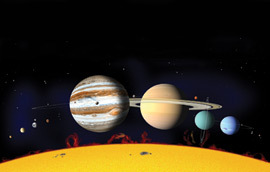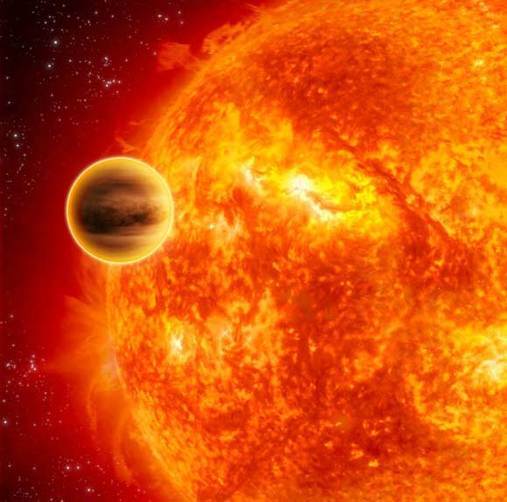Assignments
Current Events for September 1, 2014Monday, September 1, 2014 at 8:36 pm
A New Way To Learn About The Solar System
"My Very Exciting Magic Carpet Just Sailed Under Nine Palace Elephants” - This is not the title of a new fiction story, but rather a mnemonic (helps you remember), created by 4th-Grader Maryn Smith, winner of the National Geographic "Planet Contest".'Lava' Planet May Be Most Earth-Like
For many years now, astronomers have been searching for a planet outside of our solar system that has a similar composition to Earth. However, the 330 extrasolar planets discovered so far, have either been composed of gas or been to far to ascertain the make-up.This Week - A Close Encounter With The Red Planet
All of us Earthlings are in for a real treat starting today. Our favorite planet Mars, is going to be just 99mm kilometers away, close enough for us to be able to see, even without a telescope - And, it will remain in that position for a whole week!Oops! Jupiter Has Lost A Stripe Again!
Jupiter, the largest planet in the Solar system is recognizable by its two distinct red strips - One in the Southern Hemisphere and the other in the Northern. However, recent photographs show that the lower strip also known as the Southern Equatorial belt, seems to have disappeared and, this is not the first time it has happened!This Week - Close Encounters With Jupiter (And Uranus)
Be sure to pull out your telescopes starting tomorrow, September 21st, to see what NASA scientists are touting as a once in a lifetime event - The opportunity to see Jupiter and Uranus close-up (kind of).Tiny Planet Mercury Shrinks Further
In a report published in the March 16th edition of Nature Geoscience, scientists revealed that the tiniest member of our Solar System, Mercury, is shrinking even further. According to lead researcher Paul Byrne from the Carnegie Institution of Washington, the small planet has contracted about seven kilometers (four miles), significantly more than revealed by previous findings.Guess What? Our Sun Has A Sibling!
A team of scientists led by University of Texas, Austin, astronomer Ivan Ramirez have identified a star that they believe is one of many siblings our sun has floating around the Universe. Formed 4.5 billion years ago from the same large interstellar cloud that gave birth to our sun, it is 15% larger and lies 110 light-years away in the constellation Hercules. Though not visible with the unaided eye, HD 162826 that lies close to bright star Vega, can be easily viewed with low-power binoculars.Join Class
If you are a student and would like to join this class, type in the Class Code below and click 'Join Class'.






